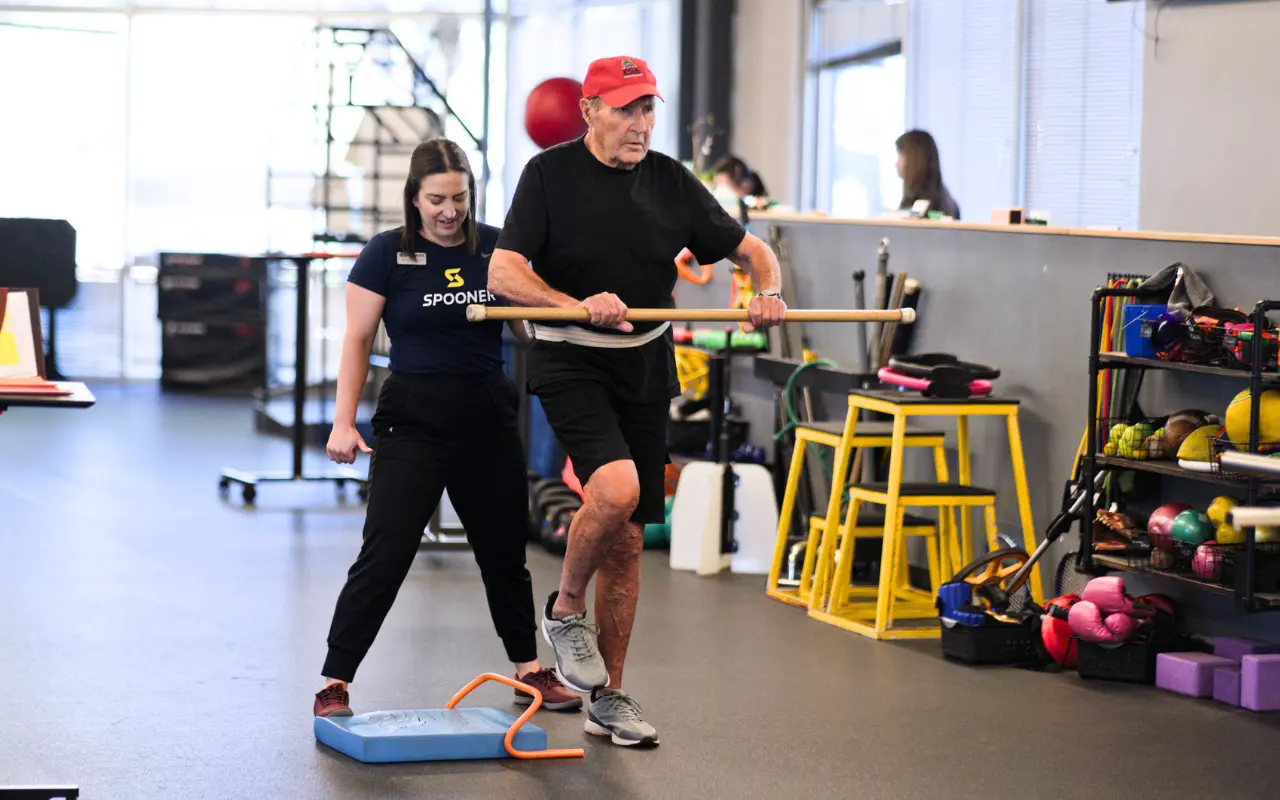April is Parkinson’s Awareness month, and, to understand what Parkinson’s Disease is and how physical therapists can help those with it to move and feel better, we talked to Kayleigh Orozco, PT, DPT, a Spooner Neurological Physical Therapist at Spooner Scottsdale:
What is Parkinson’s?
Parkinson’s is a neuromuscular disorder that affects your body’s ability to initiate or stop movement- or, as I like to call them- go or no go pathways. This disorder affects your body’s ability to create and secrete dopamine, which is how your body starts and stops movement.
What Causes Parkinson’s?
This is the million-dollar question. We don’t particularly know what causes it. Some people will say that there are environmental factors. Some will say there’s a hereditary issue. However, there is not one specific cause.
What are the Steps to Get Diagnosed?
A lot of times, the first couple of symptoms will be a small, resting tremor. We call it a pill rolling tremor. It’s usually in the hand, and it shakes, and it will go away when someone starts to move their arm. But, when they are sitting there, their arm will shake.
What can also be one of the earlier symptoms is micrographia, which means their handwriting gets really small. Another symptom is microphonia, which is when they start speaking very quietly, and this is a symptom that a loved one will notice and ask them to speak up. However, someone with Parkinson’s will feel like they are shouting or speaking normally when they are not.
One would get diagnosed by their neurologist. There isn’t a specific test that diagnoses Parkinson’s Disease, but there are certain tests that can either rule out other diseases, or further support the diagnosis. It is diagnosed based on symptom presentation.
A common treatment for Parkinson’s is called LSVT, which stands for Lee Silverman Voice Training. This treatment began as speech therapy to address the microphonia. Then it was determined that we can take the same concepts and create a functional, strength-based therapy.
Learn 4 more steps to help manage and Parkinson’s in “4 Steps Forward to Treat Parkinson’s” on the Spooner Blog.
How do symptoms develop?
The hallmark symptom is that resting tremor. However, the symptoms that affect the patient the most are “bradykinesia” and “hypokinesia”- basically slow and small movements. These are often the result of the inability to initiate movement. This usually looks like a shuffling gait because someone with Parkinson’s won’t be able to pick their feet up very high. This can turn into a different type of gait deviation called festinating. This happens when they are shuffling and begin to shuffle really far forward, and they can’t stop their movement. This means that falls are common.
The opposite side of this is a concept called freezing. This happens when they will be walking, and everything will be fine, but their body gets frozen in place. This usually happens with changes in surfaces or thresholds. When there is this change, their body cannot initiate the next step.
You also start to see postural control issues. They may start to hunch over a lot more, as there is a loss of their sense of where their body is in space. This can further lead to those smaller movements.
What is a PT’s role in helping those with Parkinson’s?
Spooner physical therapists work to help you improve balance, decrease your risk of falling, and increase your global strength. There are physical therapists who are specialized to treat those with Parkinson’s. Our main goal is to help with the recalibration of your sensory system.
If you are moving slower and smaller for long enough, your body starts to perceive your movement patterns as normal. The physical therapist’s role is to highlight that you are, in fact, moving slower and smaller than normal. Then, we focus on larger amplitude movements that will feel foreign and funny, but it’s to help remind the sensory system of what is normal so they’re at a lower fall risk and can complete daily tasks.
If you or a loved one has been diagnosed with Parkinson’s, schedule an appointment with a Spooner Neurological Physical Therapist today!

